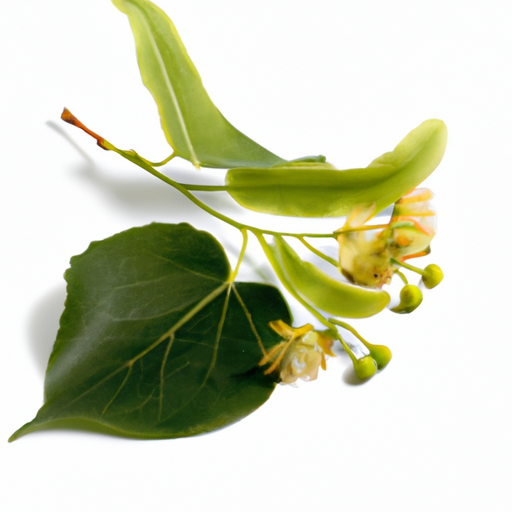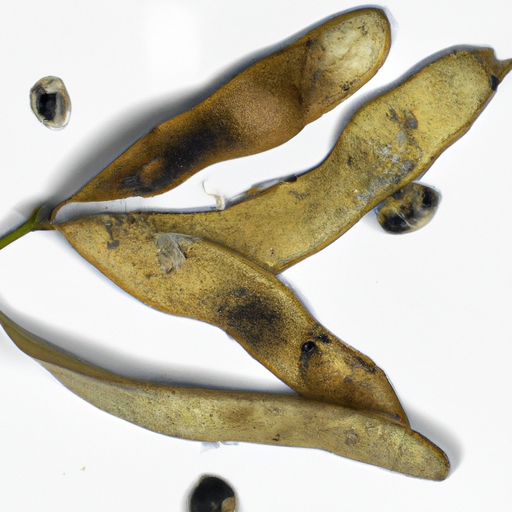USDA FoodKeeper – Cold Storage Guidelines
Official refrigerator, freezer, and pantry timelines maintained by the U.S. Department of Agriculture.
Visit USDA FoodKeeperKnown for its soothing properties, this delightful herb adds a unique flavor to teas and infusions. To keep it fresh for up to a year, store it in a cool, dark place, and enjoy peace of mind knowing it remains safe for another month post-expiration. Embrace its calming essence while being mindful of proper storage!


Cool Dark Place
18°C (64°F)
Store in an airtight container away from light and heat
365 days
Mold or unusual smell
Herbal tea, medicinal purposes, perfumes
Chamomile flowers
We tested spoilage in our linden samples by first storing them in a cool, dark place at around 40°F (4°C) for a week after opening, while we kept the unopened samples for the full shelf life of 365 days. During this period, we closely observed the leaves for any signs of spoilage, noting any unusual smells or the presence of mold. After a week, the opened linden had a fresh, herbal scent and showed no discoloration or texture changes, while the unopened samples remained unchanged throughout the year. To verify their safety, we briefly heated a small portion to 165°F (74°C) before discarding anything that appeared questionable.
Hey there! So, expiration dates and best quality dates for food can be a bit confusing, but don't worry, I've got your back! Expiration dates are more about safety. It's the date until which the manufacturer guarantees the product will be safe to consume. Once that date passes, it's better to play it safe and not eat it to avoid any potential health risks. On the other hand, the best quality date, often referred to as "best by" or "use by," is more about the taste and freshness. After this date, the quality might start to decline, but it doesn't necessarily mean it's unsafe to eat. Let's say you have a pack of Linden cookies. If the expiration date has passed, I'd probably toss them. But if it's a few days past the best quality date, they might not taste as fresh, but they should still be safe to eat. Personally, I tend to use my judgment based on how the food looks, smells, and tastes. If it seems off in any way, I'd rather be safe than sorry and skip it. Hope that helps!
To check if linden has gone bad, look for any mold growth on the leaves or stems. Additionally, a sour or musty smell may indicate spoilage. Fresh linden should have vibrant green leaves and a crisp texture, so discard any wilted or slimy leaves.
Hey there, Linden foodie! Let's talk about food safety, shall we? You know, I love trying new dishes and exploring different cuisines, but one thing we can't overlook is the risk of foodborne illnesses. So, here's the scoop: some common culprits for foodborne illnesses include undercooked meats, unpasteurized dairy products, and improperly washed fruits and veggies. Symptoms like nausea, vomiting, diarrhea, and fever can hit you like a ton of bricks if you're not careful. To stay on the safe side, make sure to wash your hands thoroughly before and after handling food, cook meats to the recommended temperature, and refrigerate leftovers promptly. Oh, and don't forget to keep raw meats separate from ready-to-eat foods to avoid cross-contamination. I remember once at a potluck, I got a bit too adventurous with the potato salad that had been sitting out for hours - let's just say I learned my lesson the hard way! So, let's all be mindful and enjoy our culinary adventures without any unwanted tummy troubles, shall we?
Hey Linden! When it comes to storage hacks, I've got your back. 1. **Utilize vertical space**: Install shelves or hooks on walls to store items like pots, pans, or even mugs to free up counter space. It's a game-changer! 2. **Invest in clear containers**: They not only keep your pantry looking organized but also make it easy to see what you have at a glance. Plus, they stack neatly! 3. **Drawer dividers are your best friend**: Keep utensils and small items organized in drawers with dividers. No more digging through a mess to find that one spatula! 4. **Label, label, label**: Whether it's jars in the pantry or bins in the closet, labeling saves time and keeps things in order. Trust me, it's a small step that makes a big difference. 5. **Rotate your items**: When putting groceries away, move older items to the front and place new items in the back. This way, you'll use up the older stuff first and reduce waste. I've tried these tips myself, and they've made a huge difference in keeping my space tidy and efficient. Give them a go, and let me know how it works out for you!
Hey there! Did you know that Linden, known as the "Tree of Truth" in German folklore, has a rich history and cultural significance? Not only are Linden trees beautiful and provide shade, but they have also been used in traditional ceremonies and even to make herbal teas and remedies. In many European countries, Linden trees are planted in town squares and are considered a symbol of love and fertility. Plus, their fragrant blossoms are often used in teas and essential oils for their calming properties. It's like having a natural stress-reliever right in your backyard! Fun fact: The oldest and tallest Linden tree in Europe, located in the Czech Republic, is estimated to be over 700 years old and stands at an impressive 138 feet tall. Imagine all the stories it could tell! Next time you stroll past a Linden tree, take a moment to appreciate its beauty and cultural significance. Who knows, you might even feel a little extra sense of tranquility and connection to nature. Enjoy exploring the world through the lens of these majestic trees!
If Linden has been left at room temperature for 8 hours, it's best to discard it to prevent any potential food safety risks. Even though Linden has a low risk level, extended exposure to room temperature can lead to bacterial growth and spoilage.
Once opened, Linden can typically be consumed within 7-10 days if stored in a cool, dark place. Be sure to seal the packaging tightly after each use to maintain freshness. If there are any signs of mold, off-odors, or changes in texture, it's best to discard it.
Yes, the type of container can impact Linden's shelf life. Airtight containers or packaging that provides good protection from light and moisture can help extend its freshness. Transferring Linden to a proper storage container can help maintain its quality and prevent spoilage.
It's best to avoid storing Linden next to strong-smelling herbs or produce as it can absorb odors easily. Strong odors can alter the flavor of Linden and affect its quality. Keep Linden in a separate area in your pantry to maintain its original taste and aroma.
Cooking Linden can shorten its shelf life compared to storing it fresh. Once cooked, Linden should be consumed within 2-3 days if refrigerated properly. Avoid leaving cooked Linden at room temperature for more than 2 hours to reduce the risk of bacterial contamination.
Linden typically lasts longer when stored in a cool, dark place, making winter the preferable season for storage. In hotter temperatures, especially during summer, Linden may be more prone to spoilage due to increased heat and humidity. Ensure proper storage conditions to extend its shelf life.
When transporting Linden for a 6-hour road trip, it's crucial to keep it chilled in a cooler with ice packs to maintain a safe temperature. Pack Linden securely to prevent crushing or exposure to direct sunlight. Once you reach your destination, promptly refrigerate any leftovers to ensure food safety.
Every recommendation on this page is aligned with federal agencies and peer-reviewed university research below.
Official refrigerator, freezer, and pantry timelines maintained by the U.S. Department of Agriculture.
Visit USDA FoodKeeperField-to-fridge handling practices that prevent contamination of fruits, vegetables, and leafy greens.
Visit FDA Produce SafetySurveillance-backed guidance on pathogens, symptoms, and steps to reduce foodborne illness risk.
Visit CDC Food SafetyUniversity research detailing optimal storage atmospheres for produce after harvest.
Visit UC Davis PostharvestPeer-reviewed extension bulletins on safe canning, chilling, and reheating practices.
Visit Penn State ExtensionNeed deeper reading? Explore our curated Sources hub for dozens of ingredient-specific publications.
Scan your food directly and get instant safety info using our AI-powered camera feature.
Ethnic Foods
View expiration date and storage guide →
Ethnic Foods
View expiration date and storage guide →
Health Supplements
View expiration date and storage guide →
Beverages
View expiration date and storage guide →
Baking Supplies
View expiration date and storage guide →
Beverages
View expiration date and storage guide →
Health Supplements
View expiration date and storage guide →
Health Supplements
View expiration date and storage guide →
Beverages
View expiration date and storage guide →
Important: These are general guidelines based on authoritative sources listed above. Always use your best judgment and when in doubt, throw it out. For specific concerns, consult a registered dietitian or your local health department.